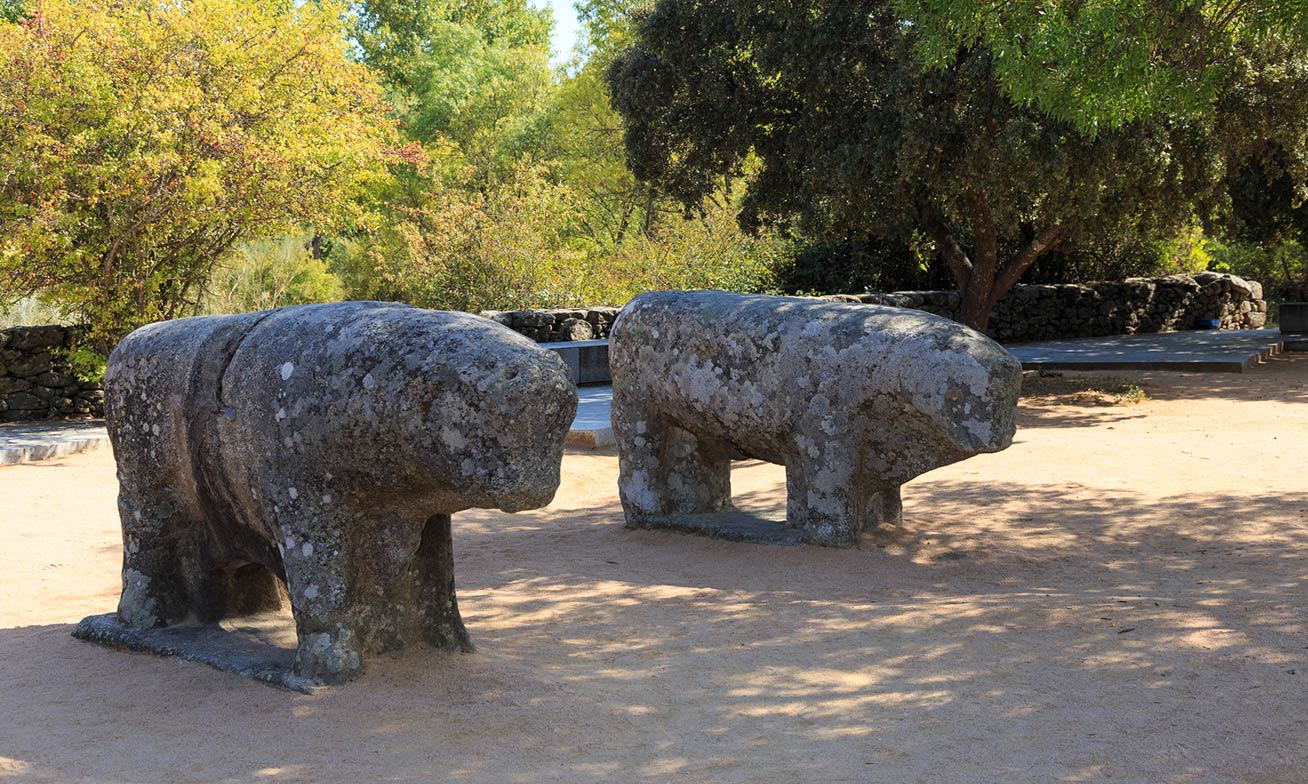Villacastín
One of the oldest villages in the province of Segovia
Villacastín is situated in the southwest of Segovia, at 1,100 m. of altitude. In the village, there are factories of high quality meat products, with their remarkable cold meat with Certificate of Origin "Chorizo of Cantimpalos". Its quarries offer another famous material: the granite Gris Villa. The main monument of the village is the impressive church of San Sebastián, with a Gothic style inside, and Herrerian style outside. It has got Renaissance altarpieces; the pulpit is from the 16th century. The tourist possibilities of Villacasstín are reflected not only in hunting and gastronomic aspects, but in its friendly neighbours or its artistic monuments. In short, a place where the visitors feel like home, even for a few hours, you could live the joy and peace of Castilian people.
Places to visit in Villacastín
One of the oldest villages in the province of Segovia.
• Town Hall.
• Fountain of San Juan, with semicircular arches; it was a Roman drinking trough.
• House of Latorre Family, with the coat of arms of the Order of Knights of Santiago.
• Palace of Madrazo.
• Palace of the Counts de Alba Real, in Plaza de Los Caños. It preserves its coat of arms.
• Medieval Fountain Los Caños.
• Palace of the Counts of Campo Alanje, which is being restored. It was the National Parador.
• House of Family Pérez de la Concha, in the main square.
• Shearing House of don Diego López de Perella, turned into a party room.
• Wool washing place of Perella, also known as Las Balsas.
• Bridge of Campo Azálvaro, or Bridge of Las Merinas.
• Town Hall, with Castilian arches. The City Council is here since 1575.
• Monastery of Nuestra Señora de Los Ángeles (1632). Nuns of the Order of Saint Claire.
• Hermitage of Virgen del Carrascal (1595).
• Hermitage of los Esclavos.
• Hermitage of Caridad (1751).
• Hermitage of Santo Cristo del Valle, with coffered ceiling in Mudejar style.
• Hermitage of Cristo de la Veracruz.
• Ancient Monastery of Franciscans, known as La Casona.
• Monolith to Fray Antonio de Villacastín (1944).
• The façade of the National Parador of Gredos in Navarredonda de Gredos (Ávila) belongs to the palace of the 15th century of Villacastín. It is very similar to the Palace of the Counts of Alba Real.
You can follow guided hiking tours for the whole family through the surrounding area, where you will enjoy nature, the sun and fresh air.

Places to visit
You can choose many trips and excursions during your stay.

Palace of Riofrío
The Palace of Riofrío is nine kilometres away from the Palace of San Ildefonso-La Granja. It was a wish of Isabel de Farnesio, the stepmother of the king Fernando VI. It is surrounded by a forest full of deers and other wild animals.

Walls of Ávila
In 1985 Ávila, the highest capital of Spain, was declared a World Heritage Site by UNESCO. There, you can contemplate the fascinating wall that surrounds the city.

Alcázar of Segovia
The Alcázar de Segovia is one of the most outstanding monuments of Spain. It stands over a hill, next to the Eresma and Clamores Rivers. It was built between the 12th and the 16th centuries, being restored and enlarged several times.

 EN
EN  ES
ES 










